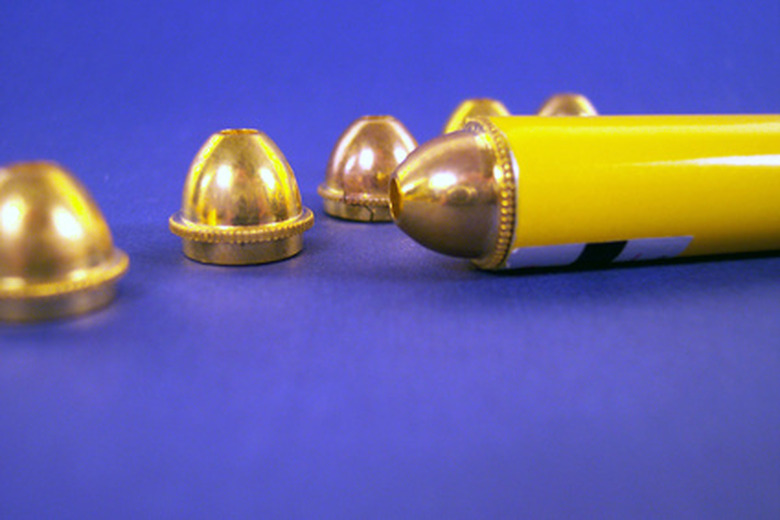How To Diffuse A Laser Beam
When a beam of light is shone onto a smooth, metallic surface such as a mirror, it is reflected and leaves the surface as a coherent beam traveling at the same angle, on the same plane, but in the opposite direction. This phenomenon, called specular reflection, occurs because the surface of the material is not absorbing the light — the beam simply turns in a new direction. When a beam hits a surface that has an irregular texture, the beam is absorbed, reflected and scattered. This kind of scattering of light is called diffusion.
Step 1
Crumple the sheets of paper and foil.
Step 2
Lay the paper and foil side-by-side on a tabletop.
Step 3
Turn off the lights.
Step 4
Shine the laser pointer onto the aluminum foil; this is the incident beam.
Step 5
Squeeze the bottle of baby powder quickly to release a fine cloud of dust.
Step 6
Observe the light as it is reflected off the dust.
Step 7
Repeat the procedure, this time aiming the laser beam at the white paper.
Step 8
Experiment with different surfaces to see which materials produce the best diffusion.
Things Needed
- Laser pointer
- White paper
- Aluminum foil
- Baby powder
Warning
Do not shine the laser beam into your eyes.
Do not stare directly at the laser pointer.
Cite This Article
MLA
Cini, Sylvia. "How To Diffuse A Laser Beam" sciencing.com, https://www.sciencing.com/diffuse-laser-beam-7892617/. 24 April 2017.
APA
Cini, Sylvia. (2017, April 24). How To Diffuse A Laser Beam. sciencing.com. Retrieved from https://www.sciencing.com/diffuse-laser-beam-7892617/
Chicago
Cini, Sylvia. How To Diffuse A Laser Beam last modified March 24, 2022. https://www.sciencing.com/diffuse-laser-beam-7892617/
